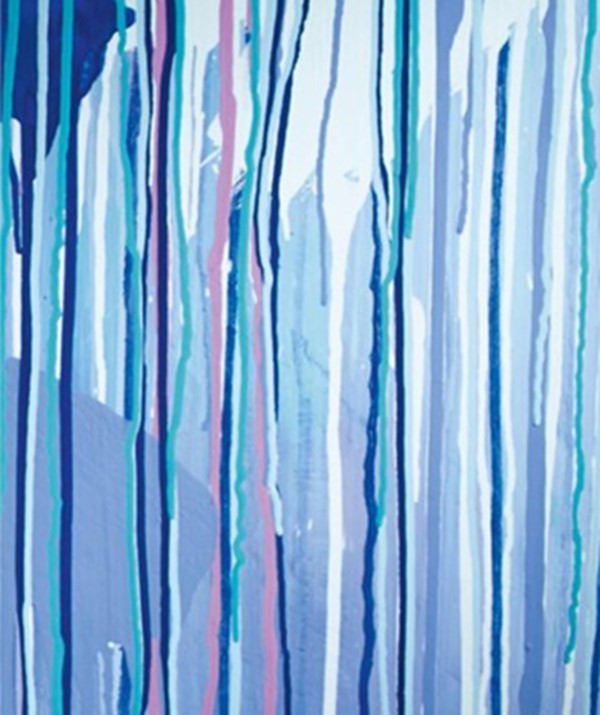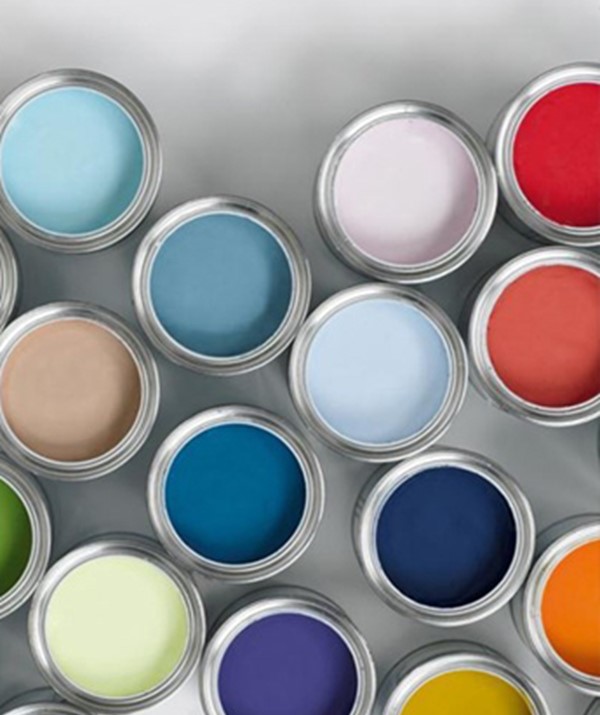Across the world, people are searching for new ways to transform their spaces into sanctuaries. We caught up with Marianne Shillingford the Creative Director of Dulux to learn more about colour in 20220 and how we can apply it, to bright up our daily lives!
So, Marianne, tell us what does a day in the life as the Creative Director of Dulux look like?
—
The only routine thing about my day is a morning run, strong coffee and marmite on hot buttered toast. After that everything depends on what’s happening out there and what colour and paint demand of me. There are always questions to answer, features to write, new colours to launch and new possibilities to explore with paint and decorating. I work with all of the teams at Dulux from our global and UK Colour experts to R&D plus the brilliant Dulux Academy (where I get to have hands-on fun with paint whenever I want). I also have the privilege of meeting some incredible people in the creative industries from young designers to well established design heroes. Every day is jam packed but that’s where the similarity stops because no two days are ever the same.
That sounds amazing! Being at the forefront of the industry, how do you feel the way we are using colour has changed over the last 10 years?
—
Instagram and all social media platforms that combine inspiration with the opportunity to share ideas has made us all much more confident about using colour. Free technology you can download onto your phone like the Dulux Visualiser seems to make us much happier to break away from off whites and safe neutrals. Trying out something new is no longer a leap of faith – it’s a considered confident choice.
We couldn’t agree more. We love incorporating colour into the palettes we fashion. When looking forward… where do you first start to see new colour trends emerging?
—
We see them emerging in all the usual places you would expect like new materials, product design, technology and social media sharing platforms but probably most importantly we see it in what people consider to be important. What we value in terms of the things and ideas we are willing to spend our time, effort, emotions and money on. In the past few years this more human centred approach to identifying colour trends has been hugely successful. It is less tangible but far more interesting and accurate – that and you don’t end up with exactly the same (or a slight variation) of the same colour story everyone else does.
Are there certain areas of life that you feel most inspired by when pulling together new colour concepts?
—
When talking to people and being tuned in to what’s going on in the wider world. We talk to experts in all areas of design as well as people who understand what we want and need from the places in which we live and work on a holistic level. Its only when you communicate, listen carefully and look at things in fresh ways that you have something new and interesting to offer.


Do colours have cycles of popularity like we perhaps see with styles in fashion?
—
Absolutely! The eye doesn’t suddenly discover ‘new’ colours because they are always there, its just we notice them again and the heart responds to them in different ways when the time is right. Colour captures the way we feel just as much as it reflects a period of history or the resurgence of a popular material, light quality or design style.
The Dulux Colour of the year 2020 is, of course, Tranquil Dawn, but are there any other colours that you think will begin trending through the year?
—
It will be palettes of colours that capture the way we feel and want to feel right now that will be more important than single colour trends. Soothing chalky pastels for places in which we need to relax and recharge, uplifting zesty brights for family spaces and gutsy rich creative palettes for bedrooms and living rooms will come to the fore. Colour blocking, painting the ceiling with colour and splitting colours across walls will rise in popularity throughout the year.
Do you think the emotive language of colour should play a part when selecting colours for the home?
—
The name of a colour should ideally reflect the way it looks and the way it is going to make the space ‘feel’ when you are in it. Choosing colour and using it on the walls of our home or workplace is also a task that we emotionally invest in so to unveil your masterpiece and announce it as simply ‘light blue’ or ‘pink’ just feels like you’re drinking warm flat lemonade.
As there is a huge focus at present on wellbeing, are there any colours which you would suggest to bring calmness during chaotic times in our lives?
—
Wellbeing in design and interior decoration everything. From the correct height of your office chair to the quality of light and air in your living room. It includes considerations about the provenance and sustainability of what we choose to buy and how effective it is at performing the task it is intended for. ‘Wellbeing’ has become associated with mindfulness and good mental health in recent years and for good reason, but wellbeing is much deeper and more fundamental than that. I can hear myself starting to rant… so back to the bit of wellbeing I really know something about... In colour terms it is the shades that give us what we need for the situation we find ourselves in right now that will offer us the greatest sense of wellbeing. The soft greens and blues of nature that reconnect us with the outside while we are stuck indoors. The deep rich colours of the night while our sleep is disturbed by worry and dreams are not the flying kind.
What would your 'Top 5' hacks be in relation to colour? Whether that be selecting, pairing or even painting!
—
I have a constantly changing top 100 but here are 5 that seem important right now.
1\ Look for the colours you love in the things that are around you and use these as inspiration for your projects. The Dulux Trade Colour Sensor is a very handy device when it comes to gaining inspiration from your surroundings - with the ability to scan any surface and provide the closest colour match via an app on your mobile device. The Dulux Trade Colour Schemer is also a good tool to create palettes that work together beautifully in commercial spaces, allowing you to create professional branded mood boards, all in a few clicks.
2\ Learn how to tint bits of old paint you have left over from other jobs into colours that you do love for little projects and art work. Invest in a 250ml tester pot of primary colours - Red: Monarch, Yellow: Goldcup, Blue: Oxford Blue, Black and Vandyke Brown. Add a big tin of white. These are the colour equivalents of flour, eggs, pasta, salt pepper and olive oil in your kitchen cupboard.
3\ Use dark shades to make things stand out in a room and pale ones to make them step back
4\ Pops of bold colour in a room are fine but they act like naughty children when there are too many of them. Two or three are more than enough.
5\ Invest in good paintbrushes and rollers and learn how to clean them out and look after them. Good tools make light work of all jobs. I have brushes that are older than my children (the oldest is nearly 30…).
And finally for our last question, we must ask, as an expert in colour… What is your favourite colour?
—
Orange… It makes me happy every day!
Are you in the right place?